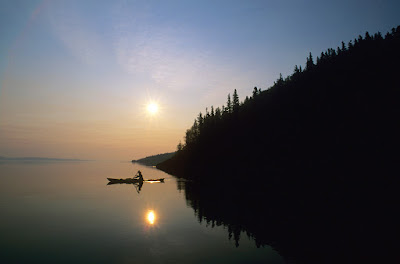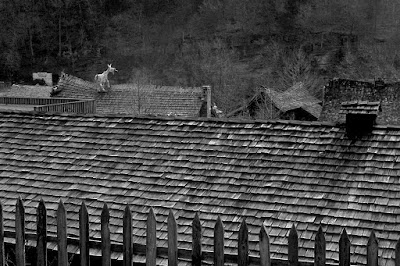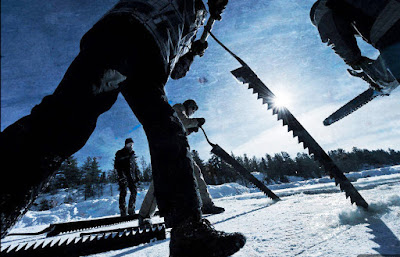Bringing life to the character held within a personal moment and revealing a peek into a personality or lifestyle engages your audience. Similarly, portraits can expose mysteries in a face refusing to tell the whole story. Those portraits possess their own strength pulling the viewer in even closer seeking answers, thus banking on intrigue.
Over the years, I've acquired buckets of experience in taking portraits. And, along the way I've made lots of mistakes. Too many that looked posed, lifeless, or uninteresting. Hopefully, those days are long behind me and I'm a little wiser in my approach, reactions and preparations. Never believe portraits are easy. They are not.
How one approaches a portrait concept is not always what you anticipated either. Things change and can change instantly. An open mind, with the goal still fresh, can push a photographer to make split-second decisions on the fly. In the below portrait of Kevin Garnett, I had only thirty minutes to make the shot. Lighting the shot was going to be crucial for the layout. The practice court was not available. I quickly scouted around and found a space under a stairwell where my assistant and I could set up the strobes. I'd use the blank wall and come in close. Of course, I had to stand on a table to be eye level with him, but it worked and I was able to make a powerful portrait of the emerging superstar.
CLICK ON IMAGES TO ENLARGE
 | |||||
| NBA star Kevin Garnett of the Minnesota Timberwolves |
Why? I think the easy answer is the risk of confrontation. The fear of rejection looming like a torch keeps those lenses pointed down and away. Why risk such a nasty experience? Well, truth is that rarely occurs and when it does, there's usually something else going on beyond your control.
Gaining trust. One of the great aspects of digital photography is how you can use its immediacy to
put your subject at ease. Take the photo and show it to them! Holy cow, how cool is that? Seeing how you envision the photograph gives them permission to relax. If they can't gain your trust quickly, you might be out of luck. Utilizing this trick can pave miles for those add'tl shots and patience as you work through the process of creating the image. They become part of the process and holds their interest.
 | ||||||
| Russian girl in Red Square, Moscow |
I waited for the right moment and snapped off this shot. I didn't get her name, where she was from or how old she was. Normally, I have to get this information for articles. However, in this case it wasn't part of the story, it was just me assimilating into the moment. Me, the foreigner, and she the little one in a sea of soldiers. To this day, its still one of my favorite portraits taken of someone I never met.
One of things I've found over the years in making portraits is its usually, for me anyway, that the last few frames I make are the strongest photographs. I believe it's a combination of comfort levels between both the shooter and the subject.
In the image below, an arranged session set up weeks ahead of time. It was going to be all available light so location choice was a huge part of the decision making process. We got lucky it was a overcast day providing that magical light akin to a giant soft-box. Plus, the model wore a stunning blue robe and had brilliant red hair. I was giddy with delight over the range of vibrant colors on this late afternoon shoot. Talking to her the entire time put her at ease. I asked she open close the robe, look up, look left, look right and so on. After a while she moved naturally and found the pose that she was comfortable in. It's at that moment, the shooter needs to be ready to capture it. Release the shutter when she is at ease with herself, the light was right, and pose soothing. It was the third to last frame in this location I shot.
Shooting an article on Iceland for the Asian Magazine, Voyage, the famed Blue Lagoon is most always on the shoot list. A wonderful geothermal spa/pool created from the nearby Geothermal
Facility. A close-up was my choice to make the viewer feel like they were in the pool with everyone.
 |
| Blue Lagoon, Iceland |
I found this lovely lady with a group of German tourists who just applied the silica mud on her face. I waded over, explained my story and asked permission to make a portrait of her. She agree'd. That was the easy part. She had a wonderful, healthy look was and thankfully was at ease with the camera
The difficult part of this portrait was the background information. You cannot take this for granted just because you have a beautiful subject. This is an environmental portrait. A portrait where your subject is the main focus of the frame, but needs to be part of the environment being featured. It saves the editors the need to use two or more images to communicate what can be said in one image.
I watched the people in the background moving about while remaining attentive to my main subject.
At one point, the group behind was all bunched up and it looked odd. Then, they spread out filling the frame behind my subject. I raised up to keep her head from melting into those in back, watching the couple on the left lift a bright yellow bucket to gather silica mud, adding some snap to the left side of the frame. They spoke to each other, I spoke to my subject, Click. I got the balanced photo I was going for. It's filled with content and beauty. An attractive gal using the famed silica mud facial rub, grown-ups having fun in the background, and steam rising from the geothermal vents. Packed with information, it was all there in one frame.
 | |||
| Alma in the attic |
 |
| Blue-eyed Icelandic Horse |
I had heard of Icelandic horses with these incredible blue eyes. I made it a mission on one of my trips there to find one. I did. Now, how do I shoot what I'm trying to say with my camera?
I could shoot the entire horse....but why would I? The blue eye is what I'm trying to convey. So, close in and search for a way to make it the most important part of the image.
In ways, it's resembles the environmental portrait of the lady in the blue lagoon seen above on this post. I need to see something other than just the blue eye. But, that is also my visual point on interest. So, using a long lens and shallow depth of field, I zero in on the eye and allow the mane to soften with the lens compression the background. We know its a horse. But the shot is showing the beauty of that blue eye. So, go there first.
 |
| Dr. L.David Mech, renowned wolf biologist, Minnesota |
Most of the coverage centered around the work of Dr. L. David Mech, one of the pioneers in using radio telemetry in studying wildlife. It was an important part of the coverage in these stories.
The wolves are captured in the wild, fit with radio collars and them observed from the air in airplanes as the researchers document the animals behavior. I needed to find several ways to document this in an environmental portrait.
A little coordination with Mech and the pilot proved to be one of the ways I could combine several of the components of radio tracking wolves. It shows the aircraft, Mech and the methods used for data research from both the ground and air. The more layers of content in the image, the better it tells the story of radio telemetry and wildlife research efforts in the wilderness.
















